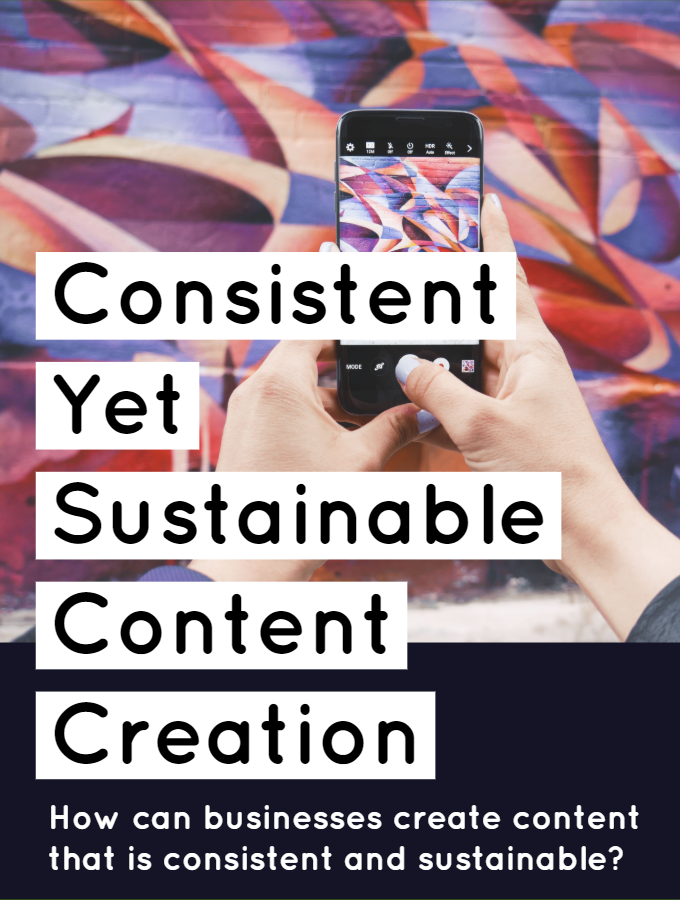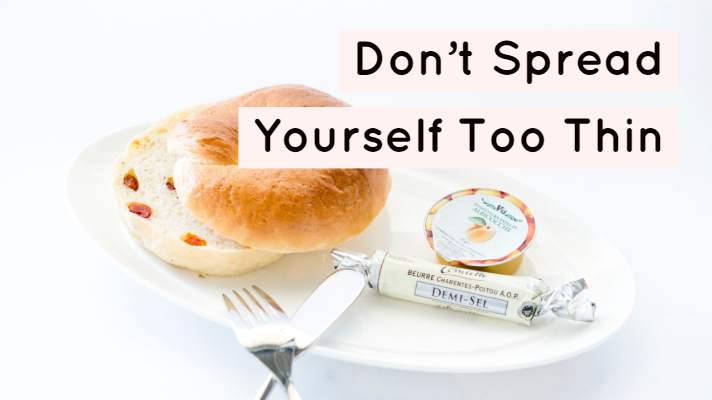
Since working on my current placement, I have come to appreciate how difficult it can be for small businesses to create content across their platforms. There has become an expectation that every company needs to post on every social platform every other hour, write a new blog post on their website every day and reply to every message or enquiry instantly, all while actually providing their product or service. It is unrealistic – especially for all of the one-man-bands out there.
That is why for this post I wanted to share a few top tips and ideas to help you with creating content that is consistent yet sustainable. So lets jump right into it.

Dedicate Time To Bulk Create.
One of my first recommendations would be to dedicate time to creating content. I think a misconception about social media is that it needs to attended consistently throughout the day. What people don’t realise is that most company’s that post consistently on their social media plan in advance. They create content in bulk and split this out across a period of time.
Rather than creating one video at a time that will go out that day, create 5, 6, 7 videos in one go so you have set yourself up for a week or two. NOT a day or two.
This could be achieved by dedicating a couple of hours one evening to bulk create your content, whether that be blog posts, videos for social media or social media posts themselves which brings me onto the next point.

Scheduling Tools Are Your Friend.
Once you have got all of your content created and edited, don’t be afraid to utilise scheduling tools. Tools such as Buffer and Hootsuite can be really useful for scheduling your social media posts in advance. You can have your tweets set up to tweet automatically for the next three weeks if you wanted to. The same goes for Facebook, LinkedIn, Instagram… you name it, you can schedule it in advance.
Most website platforms also have an option to schedule blog posts in advance too. If you have a WordPress site, I would recommend using Editorial Calendar. It lets you drag and drop your posts on a visual calendar. That way, you can schedule all your pre-made posts to go live whenever you want.
One thing I cannot stress enough though is to keep checking in. As I mention in my 4 Tips To Up Your Social Media Game post, it is essential to be engaging and interacting with your audience and community. You can’t do that if you’re never checking your accounts. Make sure you are listening to what is trending in your community, answering messages, replying to comments and engaging with other people’s content.

Don’t Spread Yourself Too Thin.
One thing that you should keep in mind when it comes to sustainable content creation, is that you don’t have to do everything. There is a misconception that you need to be posting everyday on every platform when that just isn’t the case. Quality over quantity really does apply here.
There is no point having a blog post go live everyday if it doesn’t provide anything of worth to readers. You are far better off creating one a week that is of good quality. You can there share this across platforms and promote the one rather than all of the content people aren’t going to get much from reading.
The same goes for social media. You do not need to be present and active on every social media platform. If you don’t have time or the content to be running a YouTube channel, then don’t. If your company is not best suited for visual content like a plumber or electrician, then don’t bother with Instagram or Pinterest. You don’t need to be present on every platform!

Create Pillar Content
My last tip is probably less know but I think is really useful. You should be creating pillar content.
Pillar content is basically a core piece of content that is timeless and covers one of the key topics of your business, in substantial detail. You can then use this content to inspire and form other, small pieces of content. For example, if you create a podcast episode about notebooks. (I had to think of something, okay.) This could cover a bunch of topics like, what notebooks celebrities are using, what notebook you should use for sketching or the best shops to buy your notebooks. You could then split this podcast into lots of smaller pieces of content like: short videos for Facebook; topics for your blog posts; promoted by your tweets or photos for your Instagram. This content can then all link back to your key pillar piece of content – the podcast.
Not only will this save you time when creating content across your platforms because you have a basis for it already, it will also really help with your SEO and help customers/readers be directed to the pieces of content that provide them with the most value and quality. This could then have a promotional message at the end, like check out these notebooks in our quirky stationary shop.
Hopefully you have found this post somewhat useful. I think it plays in nicely with my 4 Tips To Up Your Social Media Game post quite nicely. So, you should definitely check that out. Let me know what you think in the comments and I hope you have a great day.



